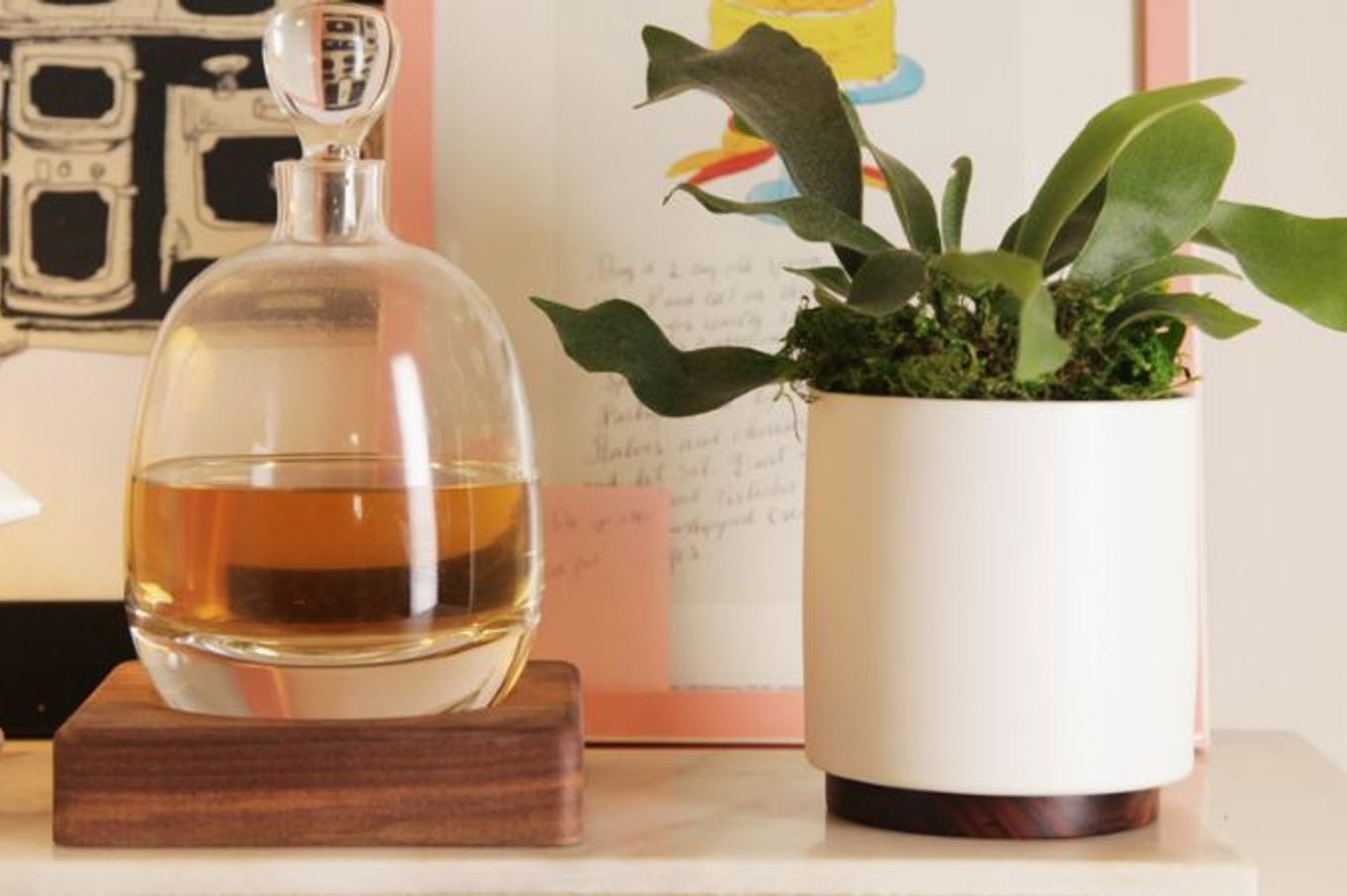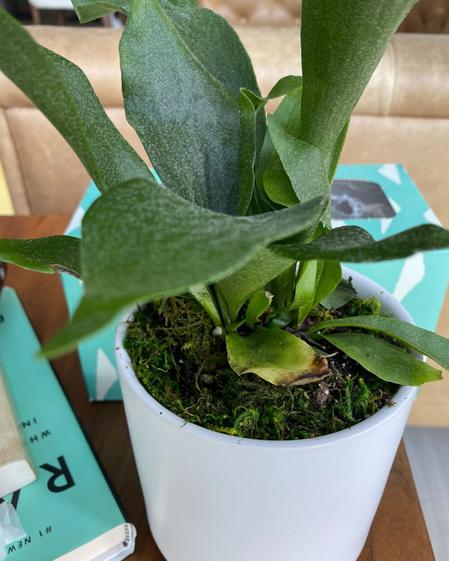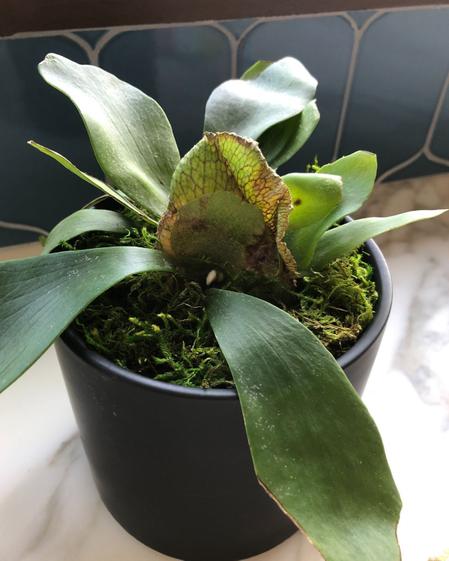Staghorn Fern Care Guide

The Staghorn Fern (Platycerium bifurcatum) is one of the most unique and eye-catching houseplants you can grow. With sculptural, antler-like fronds and a wild, living-art quality, it brings a dramatic, natural statement to any interior. Unlike typical houseplants, this fern is an epiphyte, meaning it grows on trees in its natural environment rather than in soil. It can be grown in a pot, but it truly shines when mounted on wood or hung on a wall, making it a favorite for plant lovers looking to elevate their collection—literally!
Simple Care Instructions for the Staghorn Fern
Light Requirements
Staghorn Ferns thrive in bright, indirect light, mimicking the dappled sunlight of their native forest canopies. Place yours near a bright window with filtered light: east- or north-facing windows are perfect. Avoid direct sun, which can burn the fronds, and low-light conditions, which will slow growth and cause the plant to decline over time.
Watering Needs
Unlike typical potted plants, Staghorn Ferns absorb water through both their roots and their "shield fronds" (the round, flat leaves at the base). If it’s mounted or hanging, soak the entire mount in room-temperature water for 15–30 minutes about once a week in moderate conditions. Let it fully drain and dry before hanging back up. In hot or dry weather, water more frequently—every 4–5 days may be necessary.
If your Staghorn is potted (in a loose, bark-heavy mix), water it thoroughly when the top 1–2 inches feel dry. Mist the fronds between waterings, especially in drier environments.
Humidity and Temperature
These ferns love humidity. Aim for 50–80% humidity—think bathroom, kitchen, or a spot near a humidifier. Dry air can cause brown tips or crispy fronds. Regular misting helps, especially in winter or dry climates.
Staghorns are happiest between 60–80°F (16–27°C). Avoid placing them near vents, drafty windows, or cold walls. Temperatures below 50°F (10°C) can cause stress and slow growth.
Soil and Mounting
If growing in a pot, use a very loose, well-draining mix such as orchid bark, sphagnum moss, and a little peat or fern fiber. But most Staghorn lovers prefer mounting: this showcases the plant’s natural beauty and supports its epiphytic lifestyle.
To mount a Staghorn, attach the root ball and shield fronds to a wood plaque or board using sphagnum moss and soft twine or fishing line. It will eventually grow and anchor itself to the mount over time.
Common Problems and Troubleshooting Tips
Brown Tips or Crispy Edges – Low Humidity or Underwatering
Symptoms: Leaf tips turn brown and dry.
Cause: Air is too dry, or the plant is thirsty.
Solution: Increase humidity with misting or a humidifier. If mounted, soak more often. In pots, water more regularly but allow proper drying in between.
Yellow or Mushy Fronds – Overwatering or Poor Drainage
Symptoms: Fronds feel soft, yellowish, or droopy.
Cause: Too much water or poor air circulation.
Solution: If potted, let the medium dry out more between waterings. For mounted plants, ensure they dry completely after soaking. Improve air flow and avoid soggy conditions.
Brown Spots or Patches – Normal Aging or Fungal Issues
Symptoms: Brown spots appear on shield fronds.
Cause: Aging is normal, but large, soft spots may indicate rot.
Solution: If it's just on the shield fronds, it's often natural and harmless. If you see fuzzy or spreading spots, reduce watering and check for airflow.
Stunted Growth or Pale Fronds – Insufficient Light or Nutrients
Symptoms: New fronds are small or light green.
Cause: Not enough light or no feeding.
Solution: Move to a brighter indirect light source. Feed monthly with a diluted, balanced liquid fertilizer during the growing season (spring–fall).
Fronds Flop or Plant Looks Unstable – Time to Mount
Symptoms: Plant topples from its pot, looks too big, or fronds start drooping unnaturally.
Cause: As Staghorn Ferns grow, they outgrow pots or moss balls and need support.
Solution: It’s time to mount! Look for a piece of wood or a plaque, and gently secure the plant with fresh sphagnum moss. The root ball and base fronds should sit snugly against the board. Keep mounted plants moist and supported while they root into their new home.

Most likely just normal aging.

Possibly underwatered.
Seasonal Care Tips
During spring and summer, your Staghorn Fern will grow new antler-like fronds and may even put out fresh shield fronds at the base. Increase watering frequency and feed monthly to support active growth. Keep humidity high for the best results.
In fall and winter, growth slows. Water less frequently, and skip fertilizing. Continue misting if indoor air is dry. Avoid drafts and monitor humidity around the plant closely—this is when it’s most prone to brown tips and stress.

